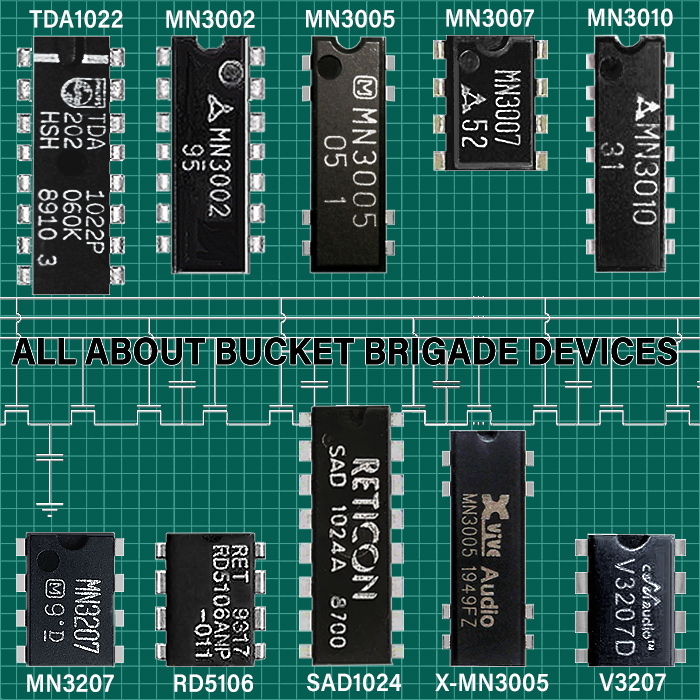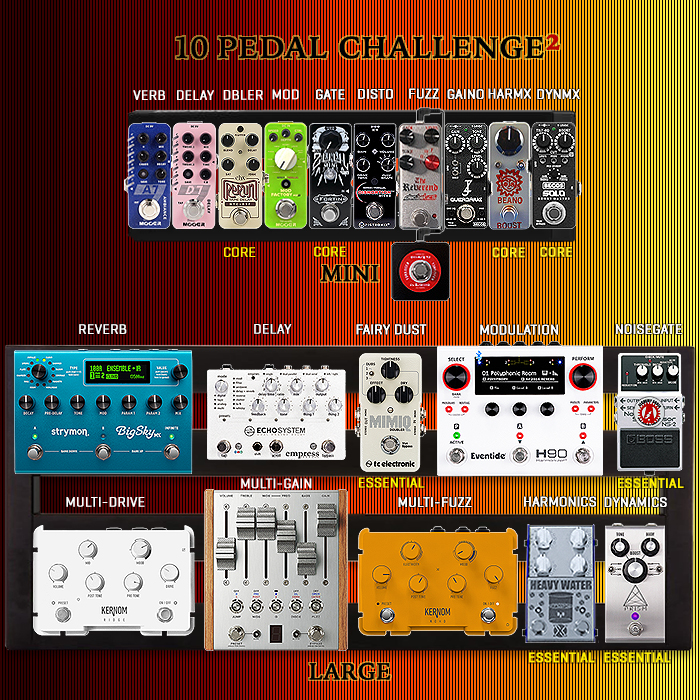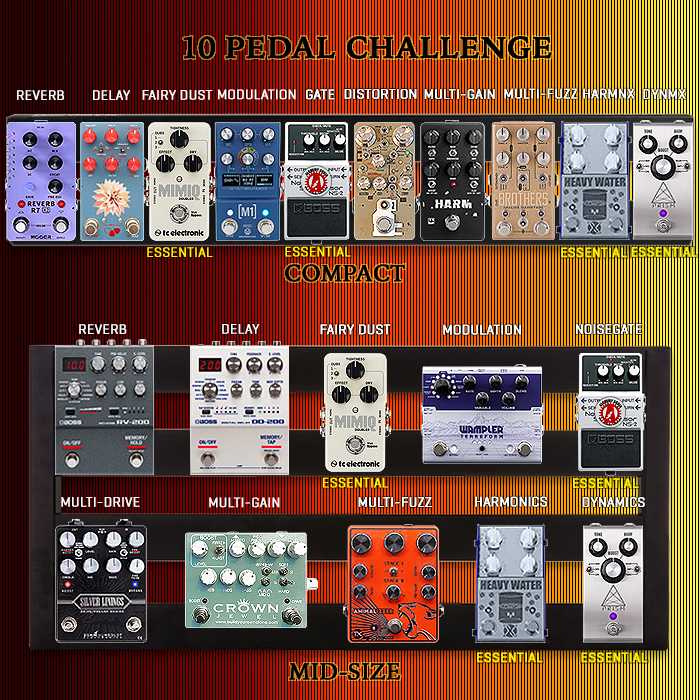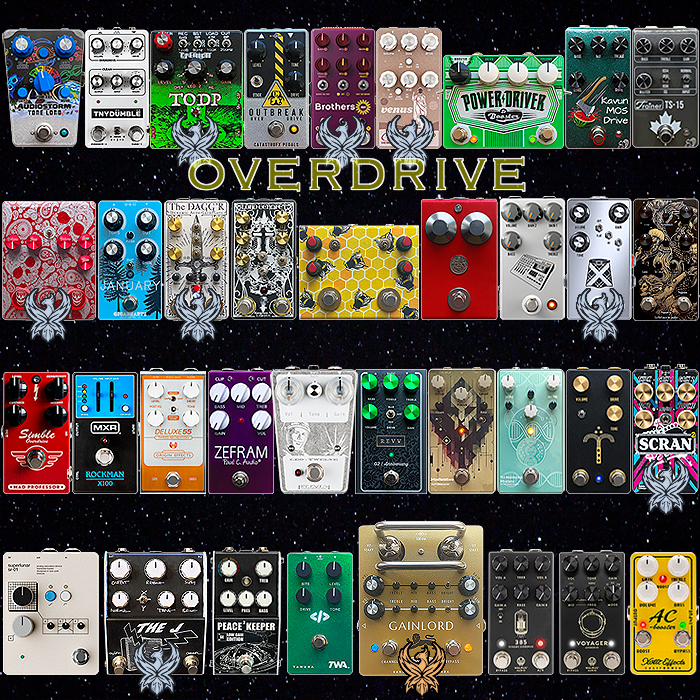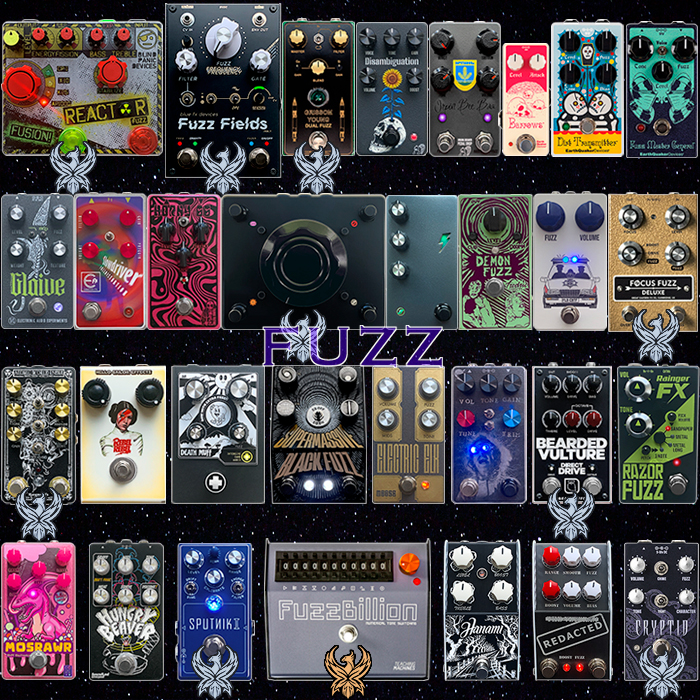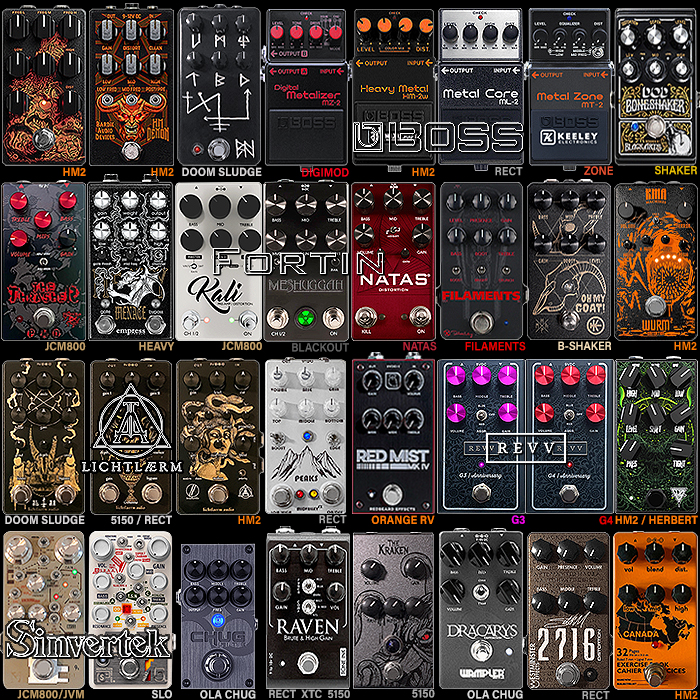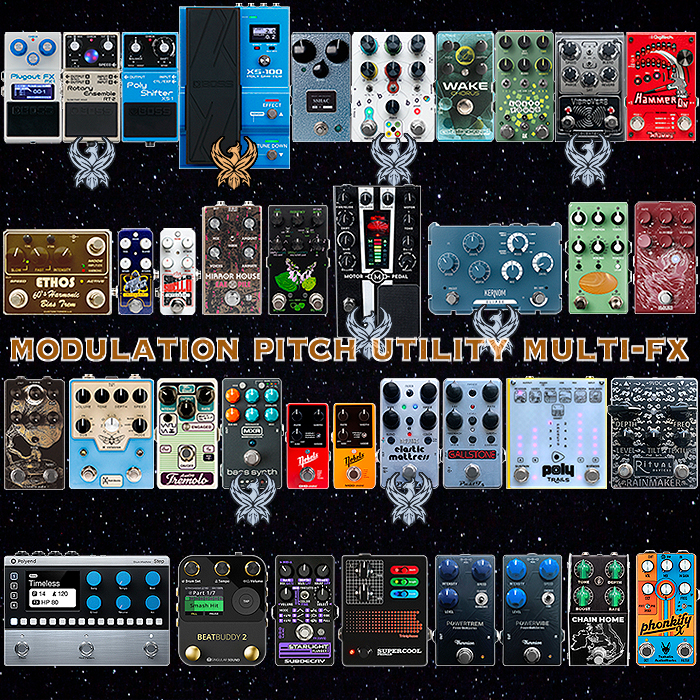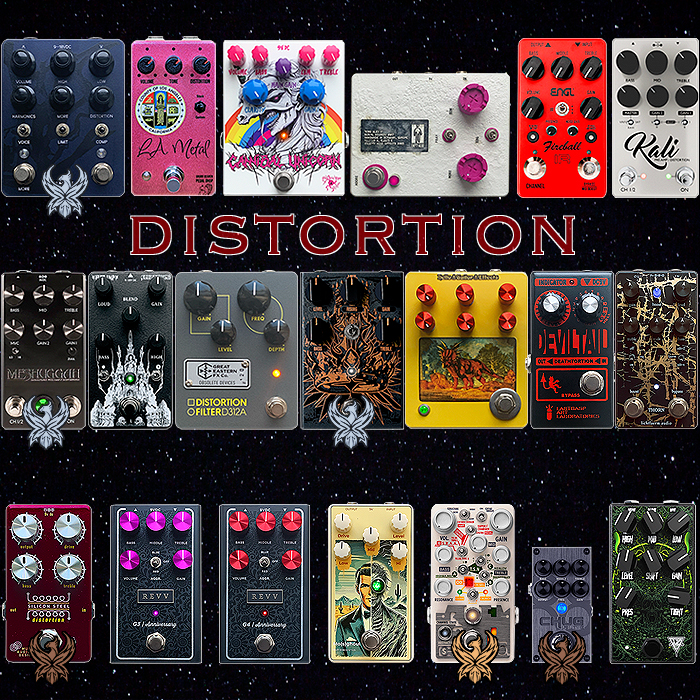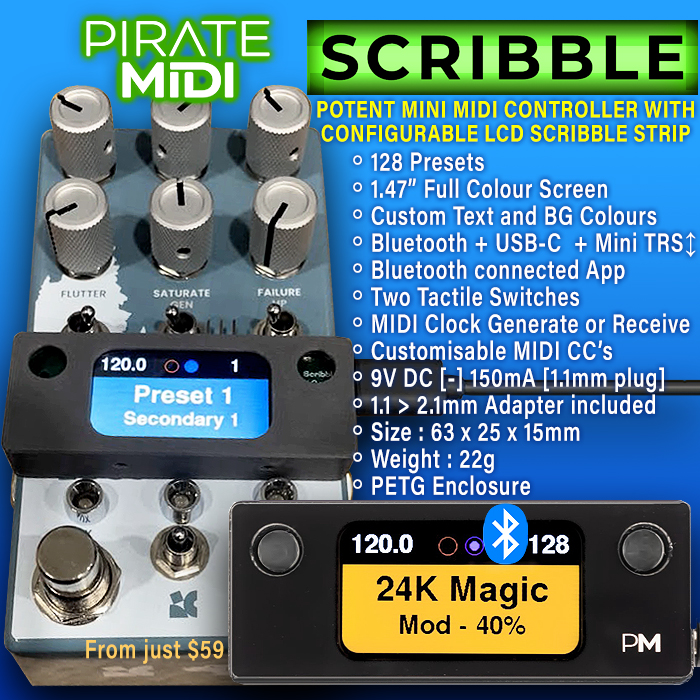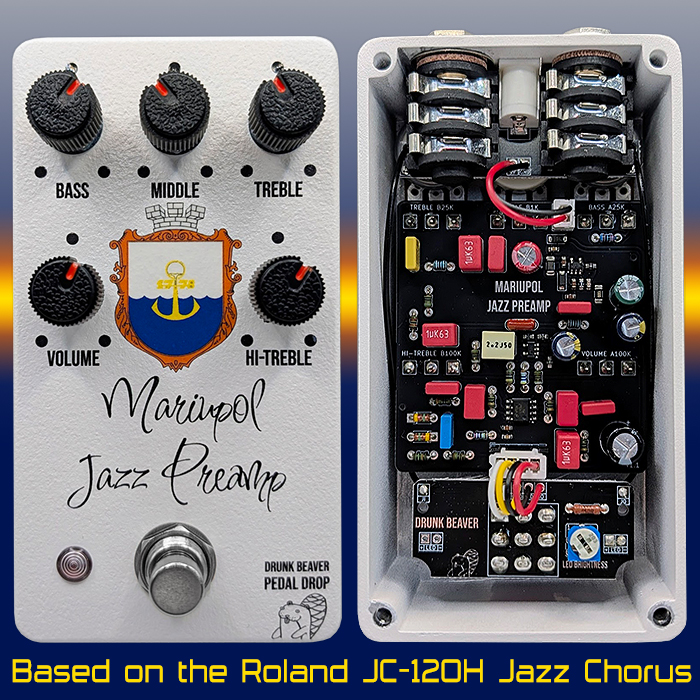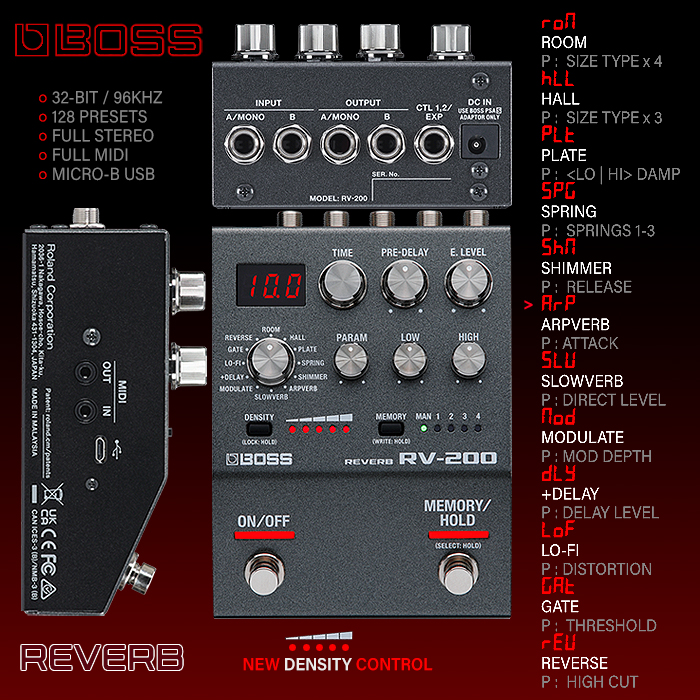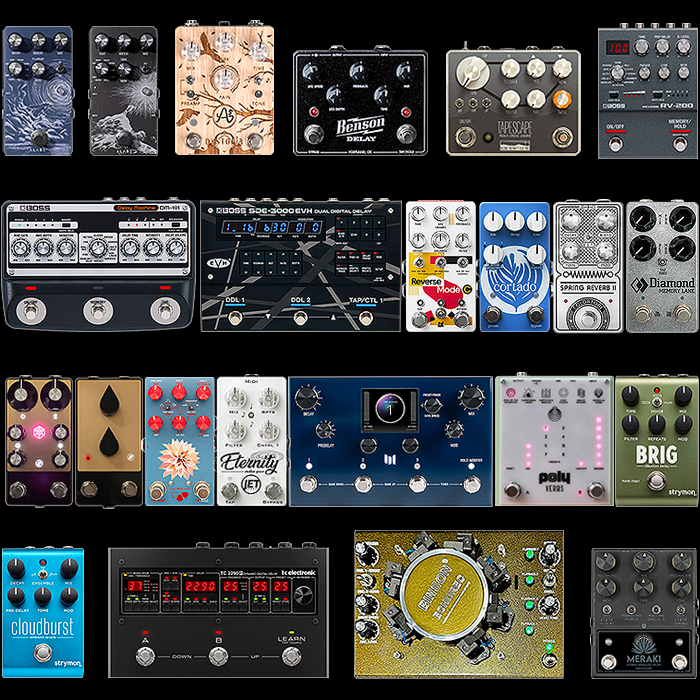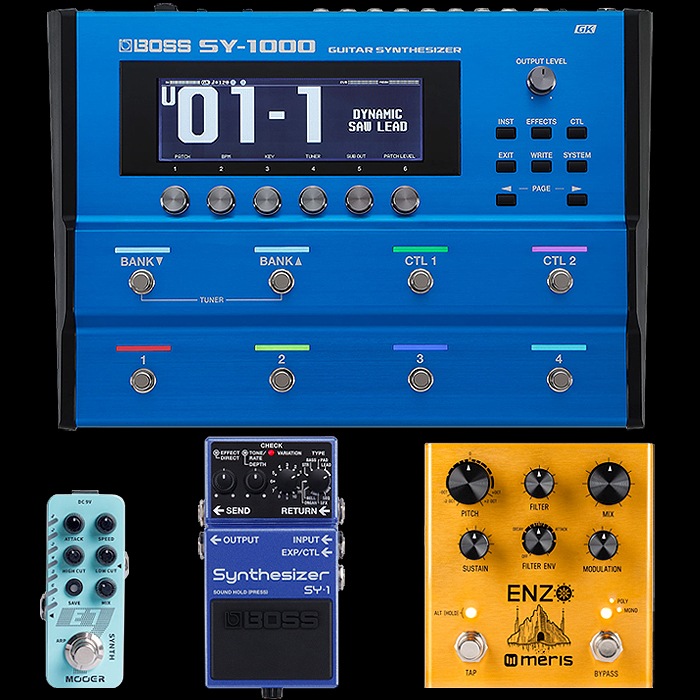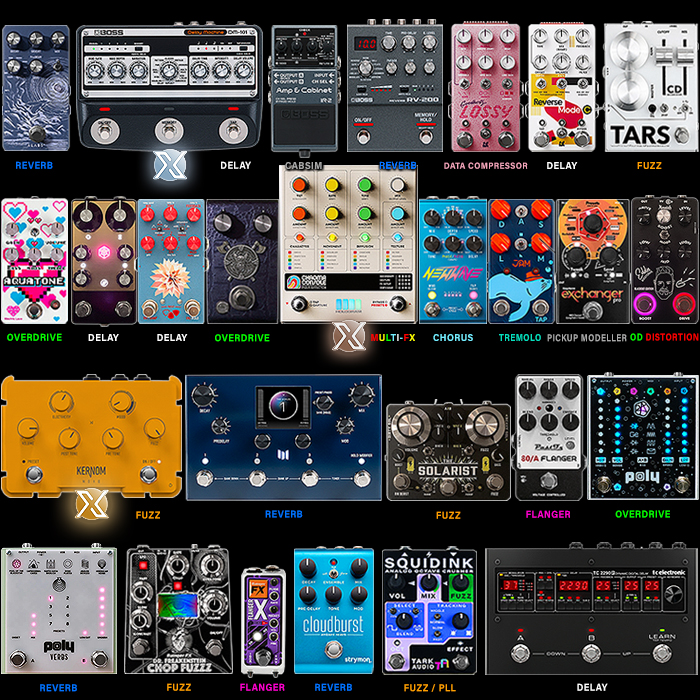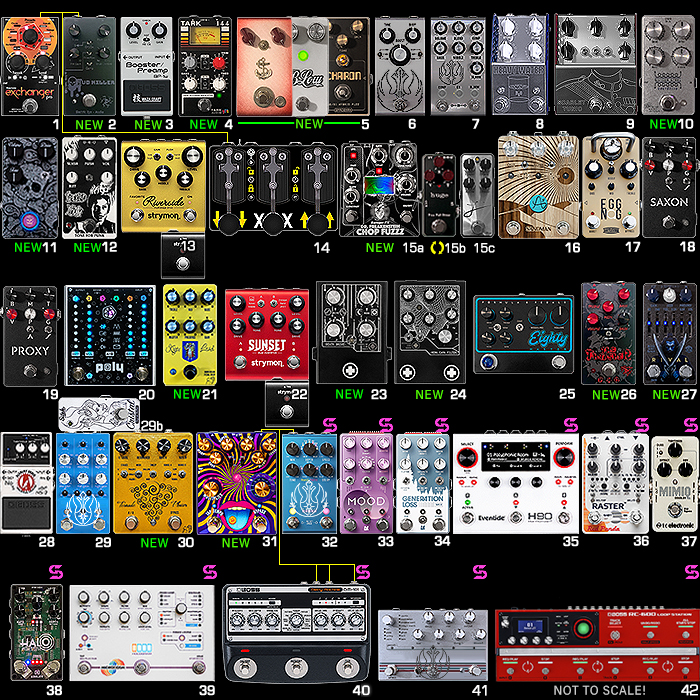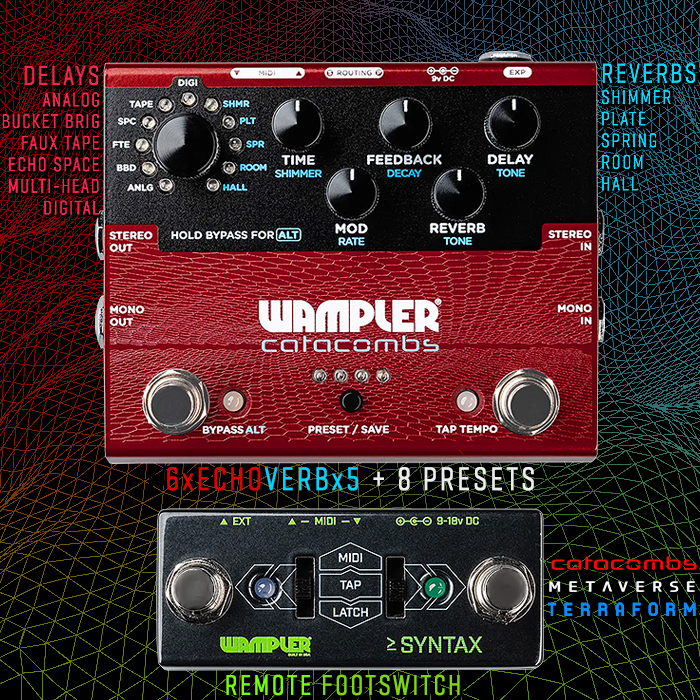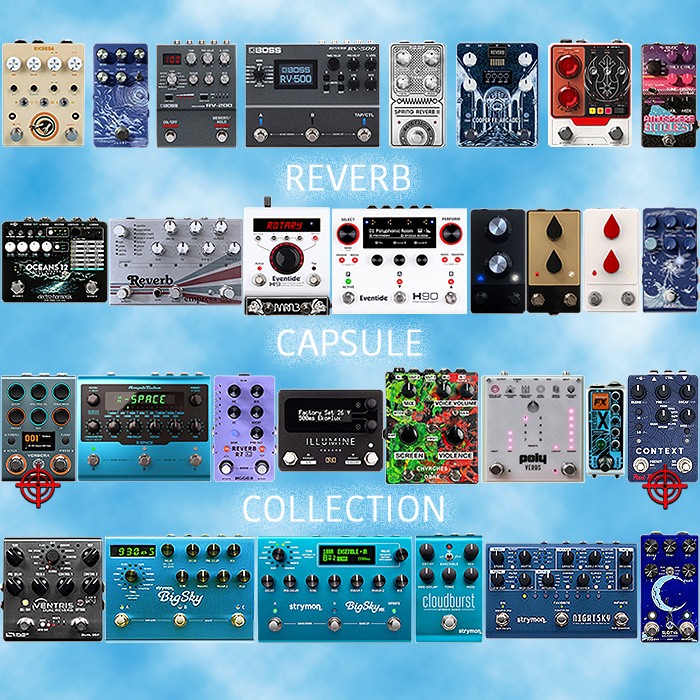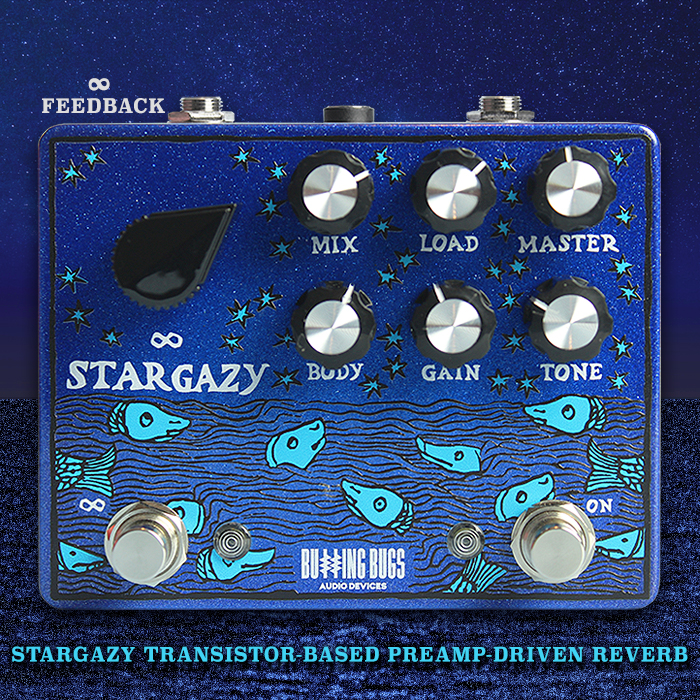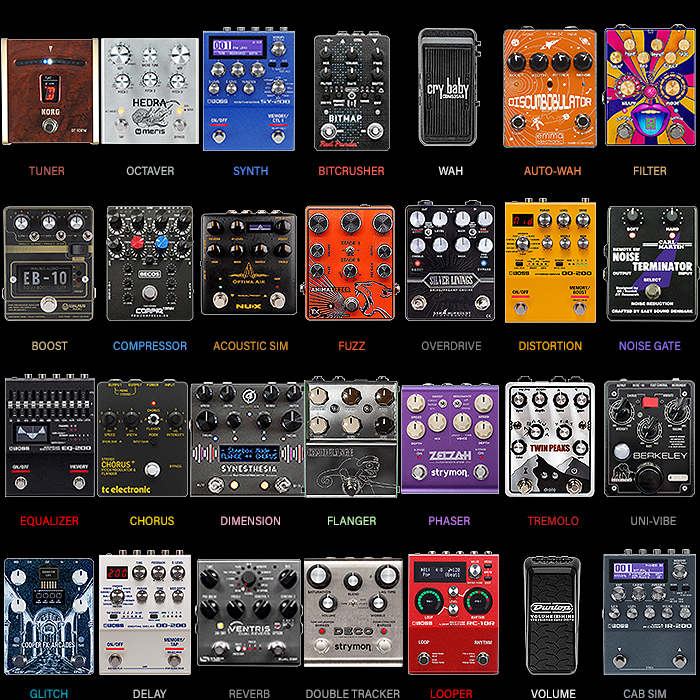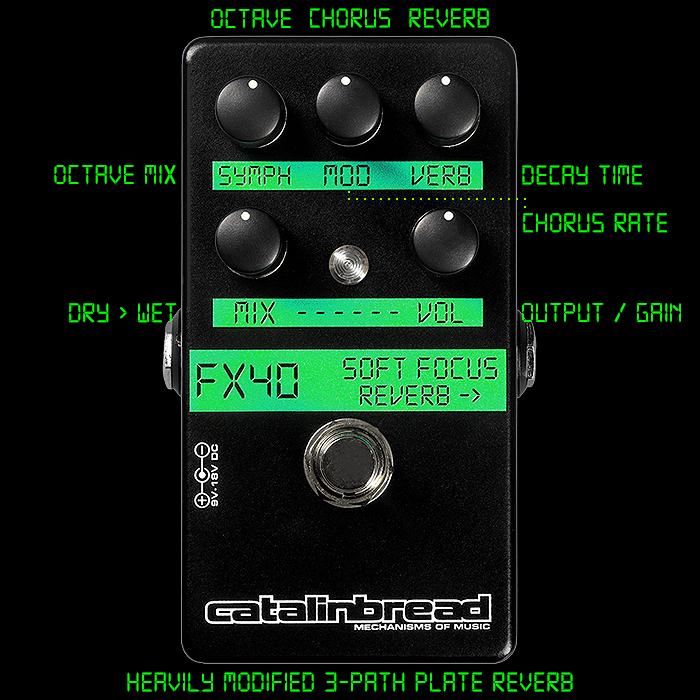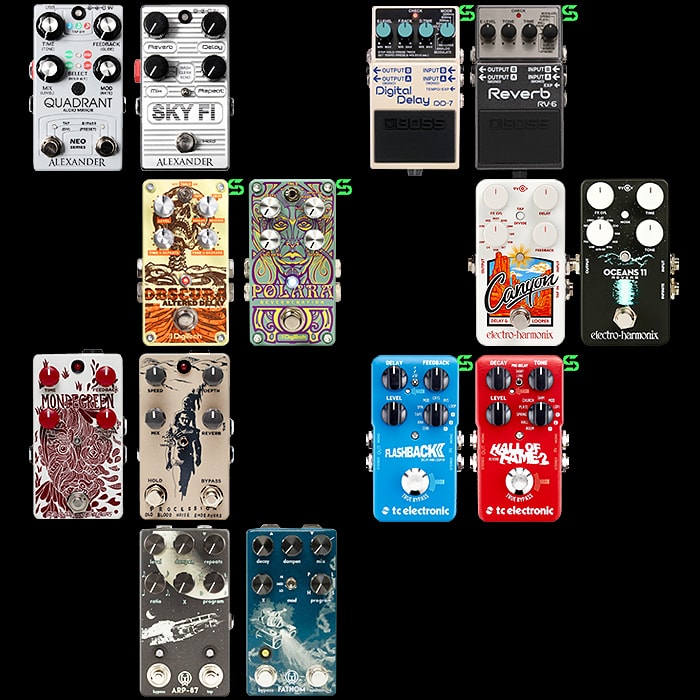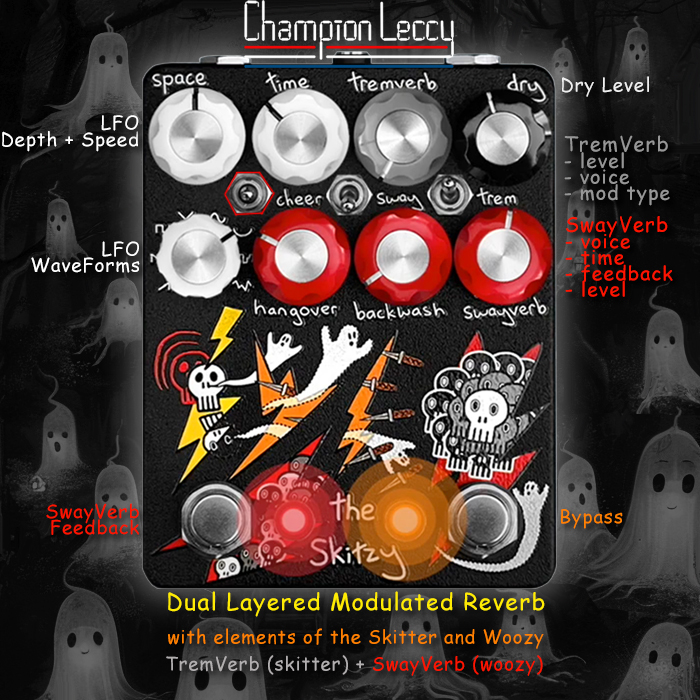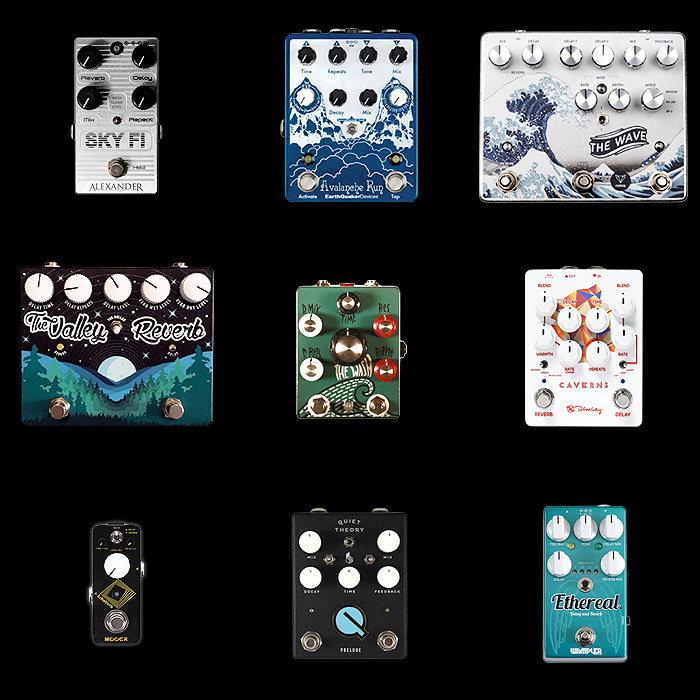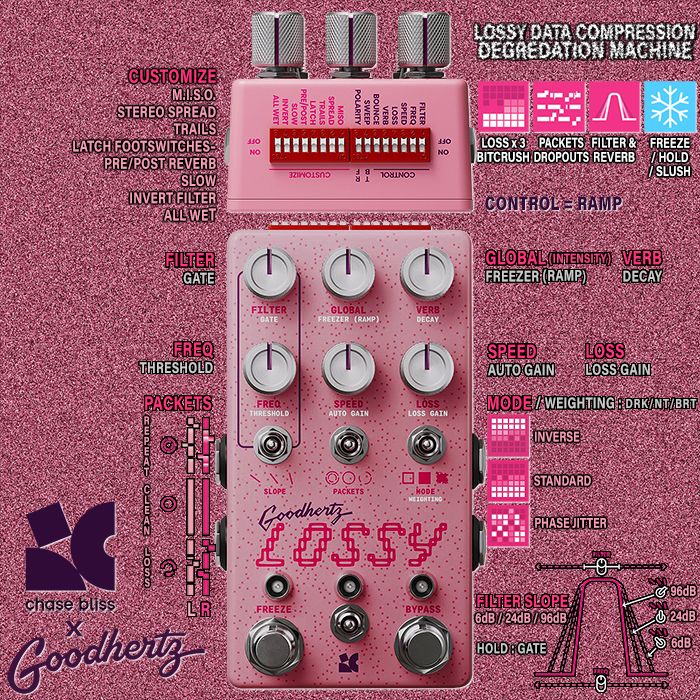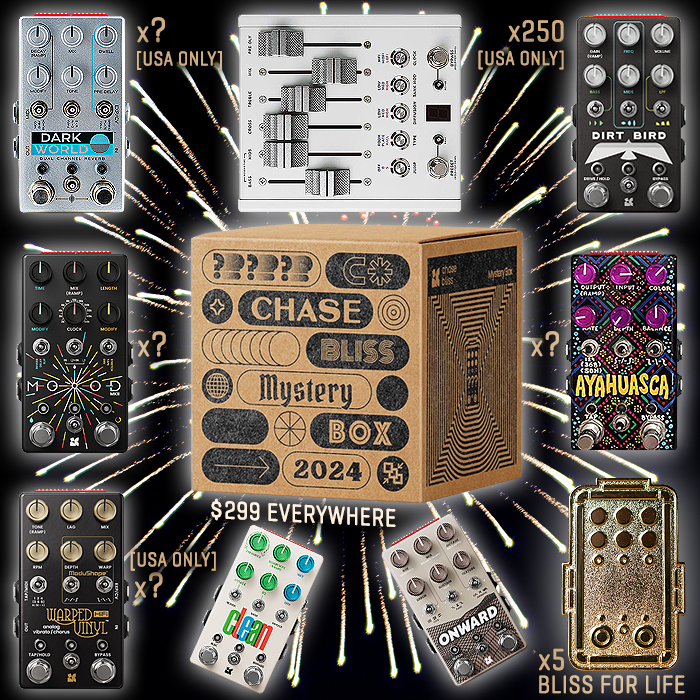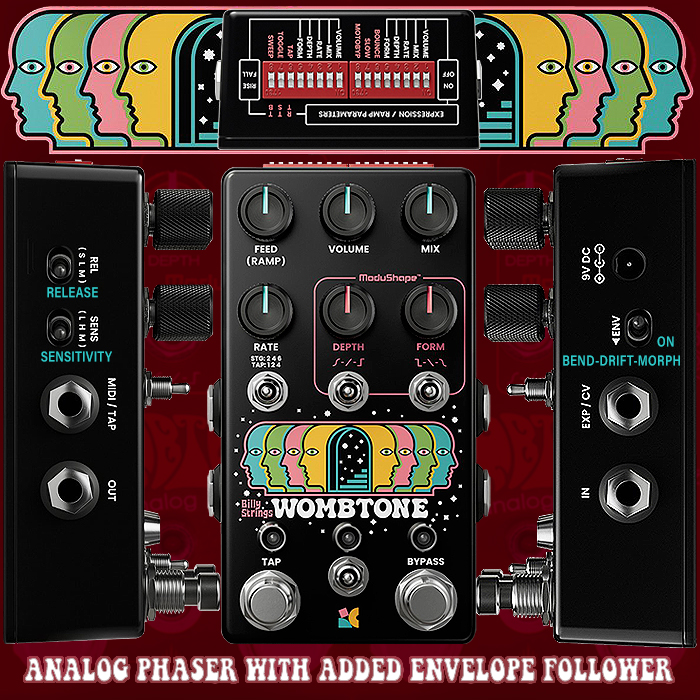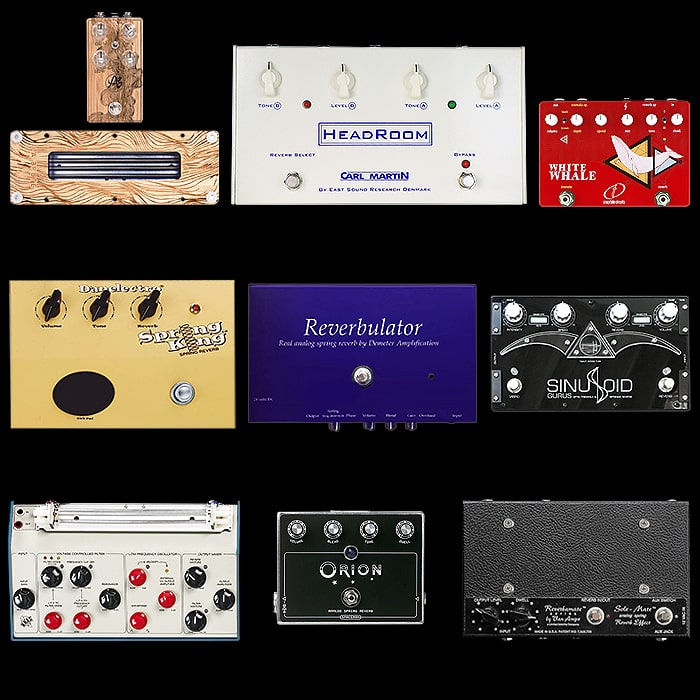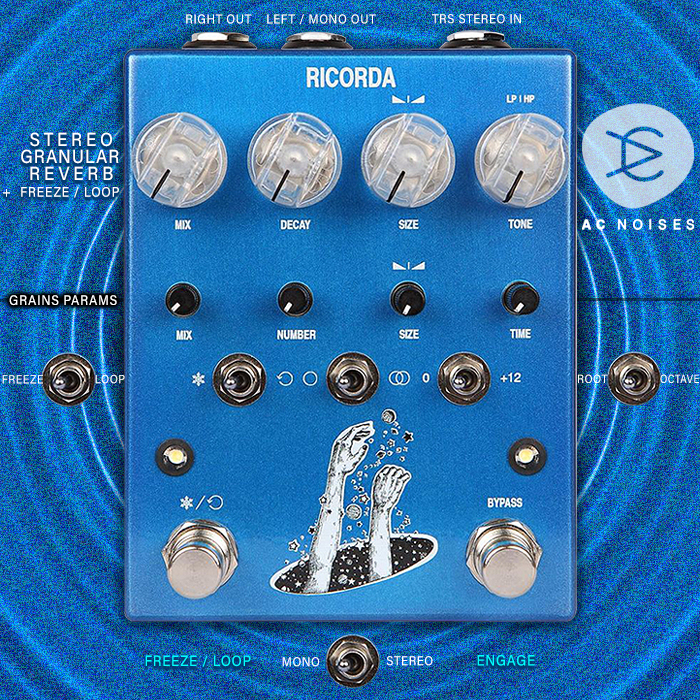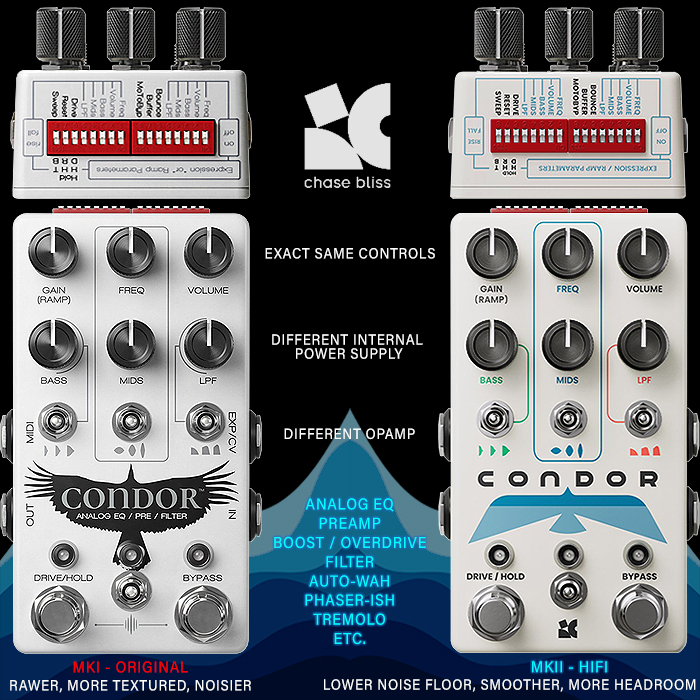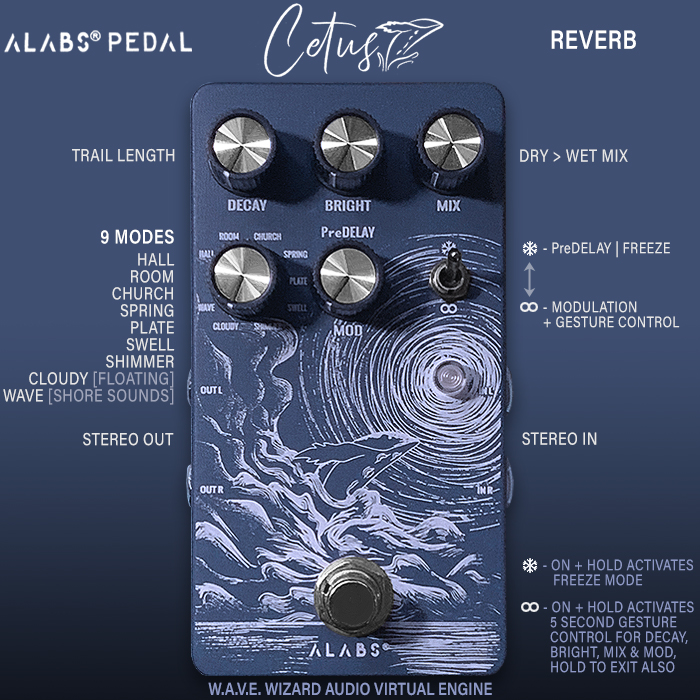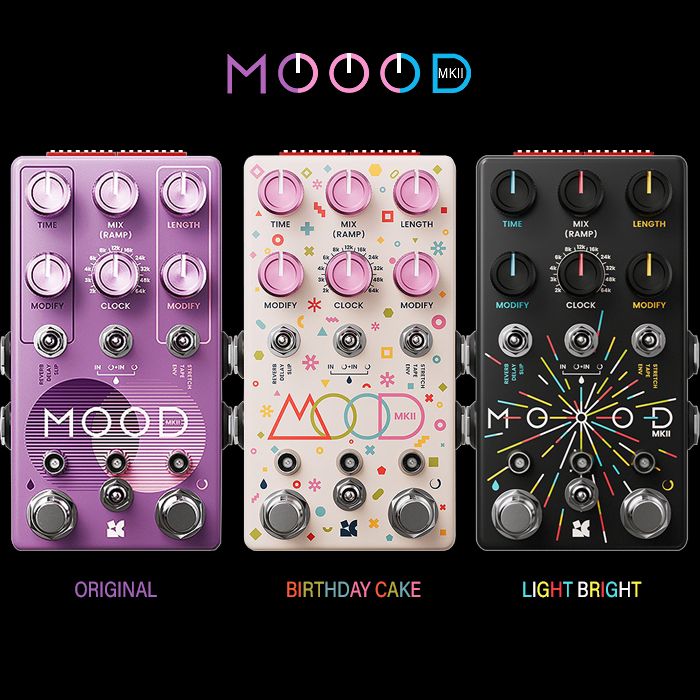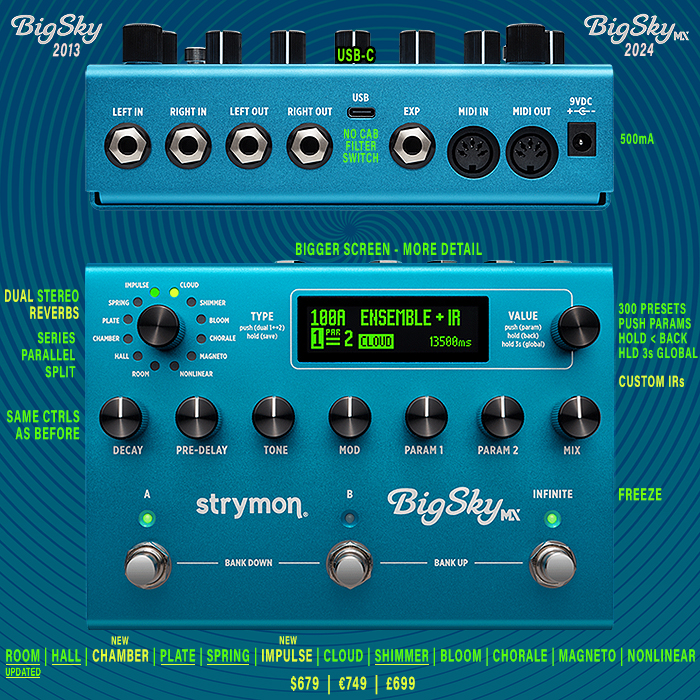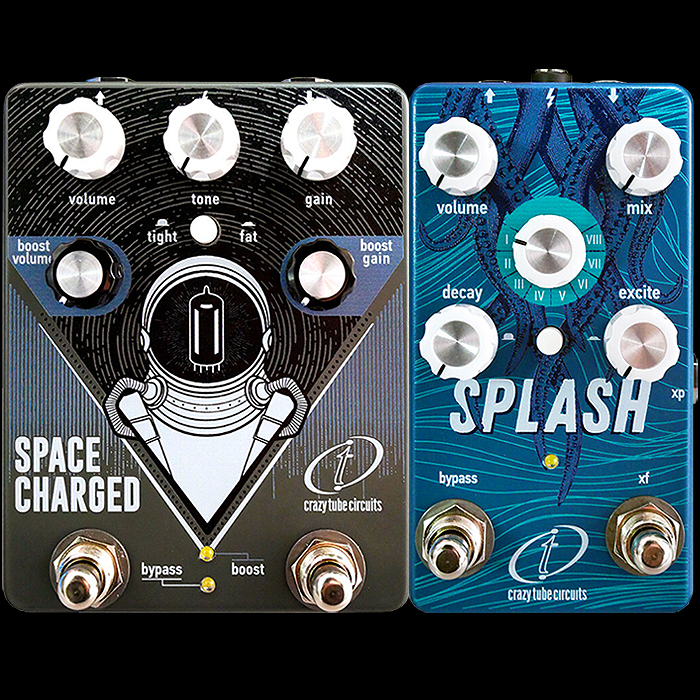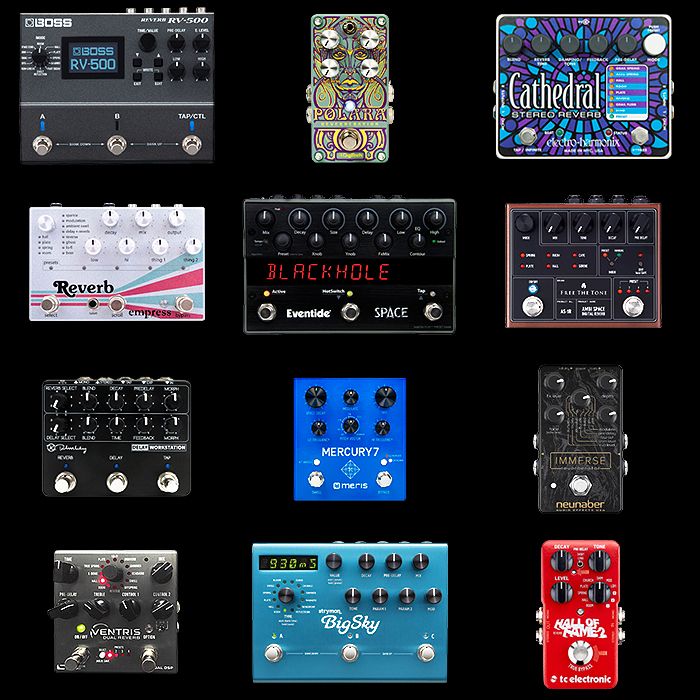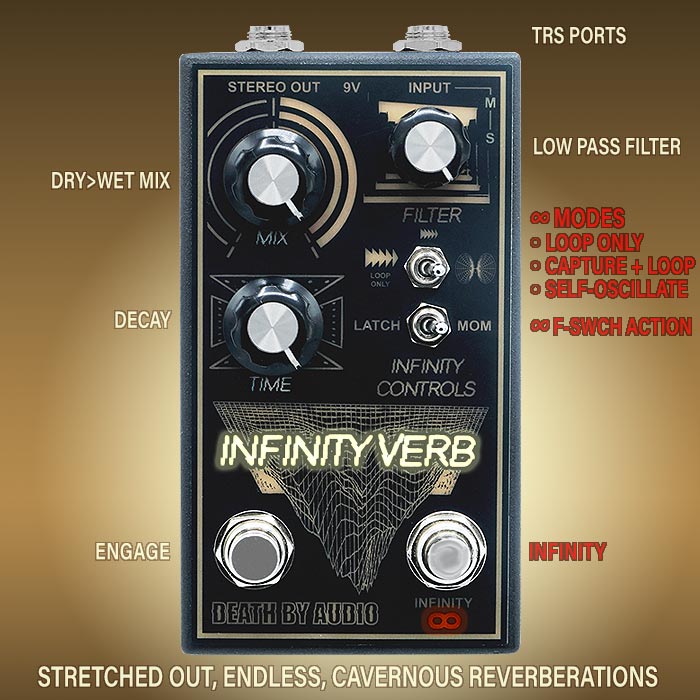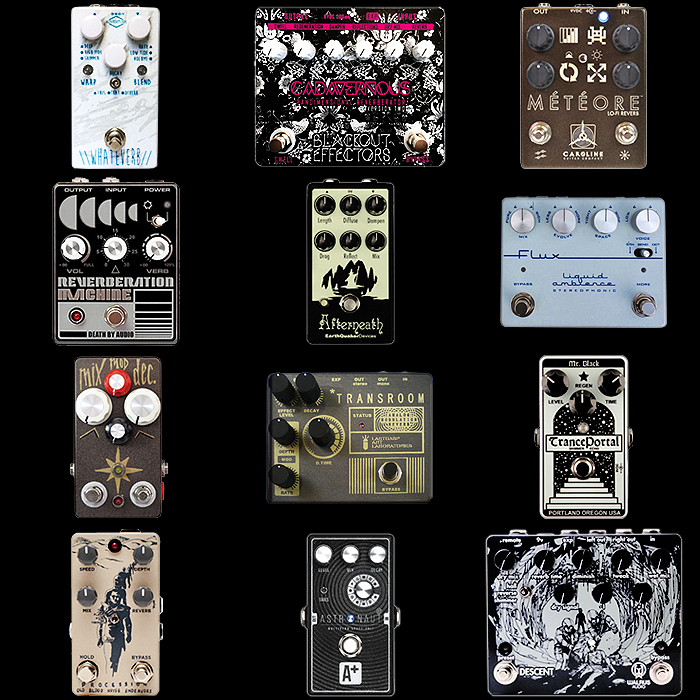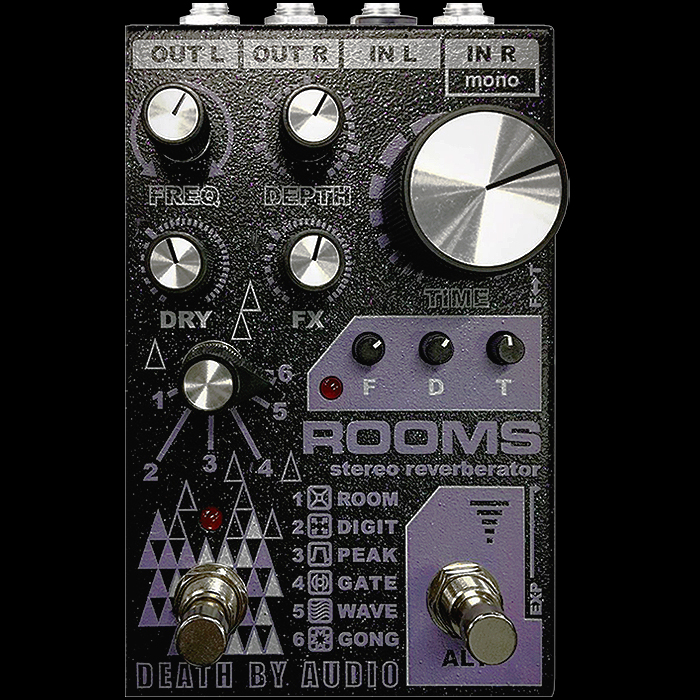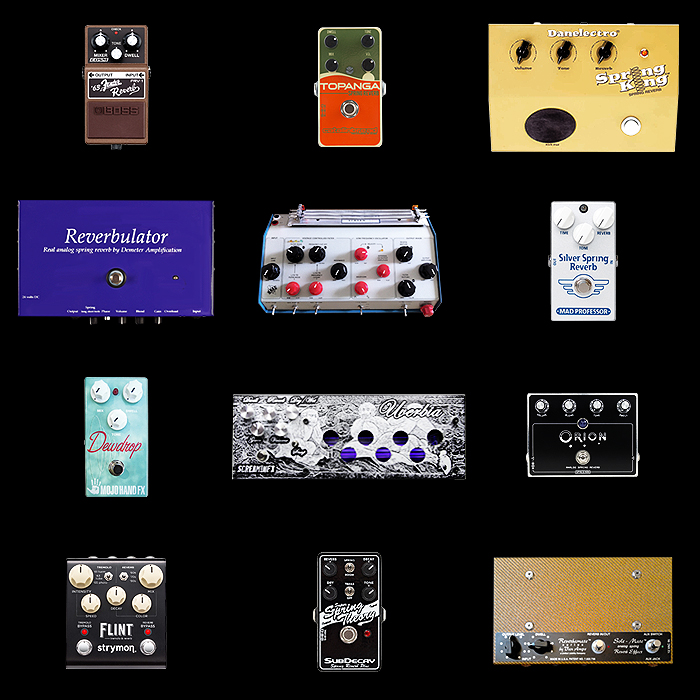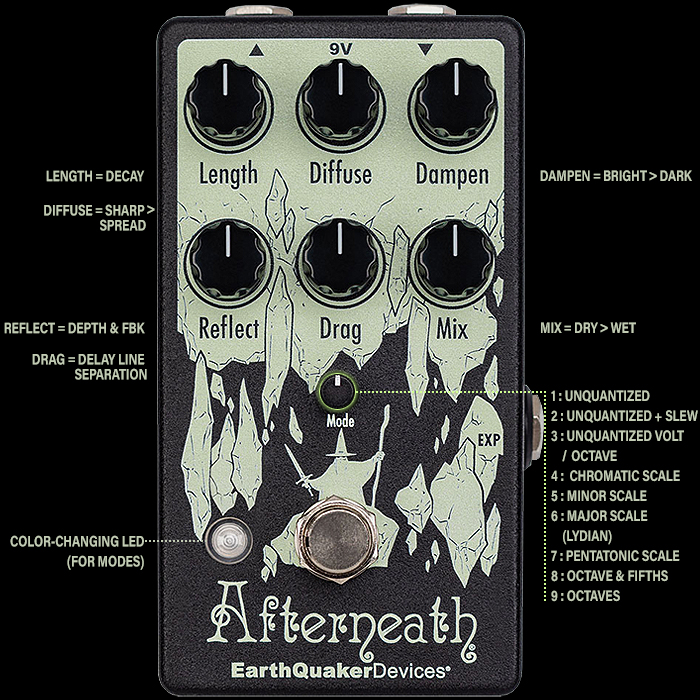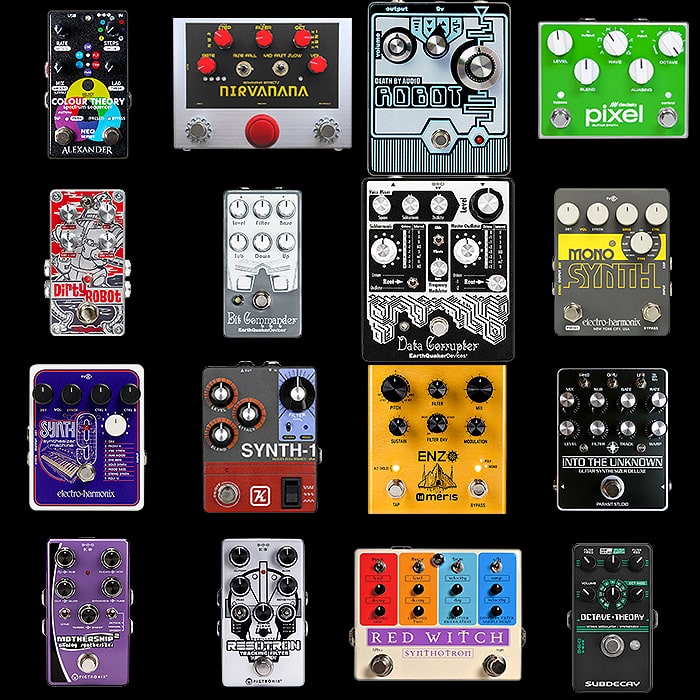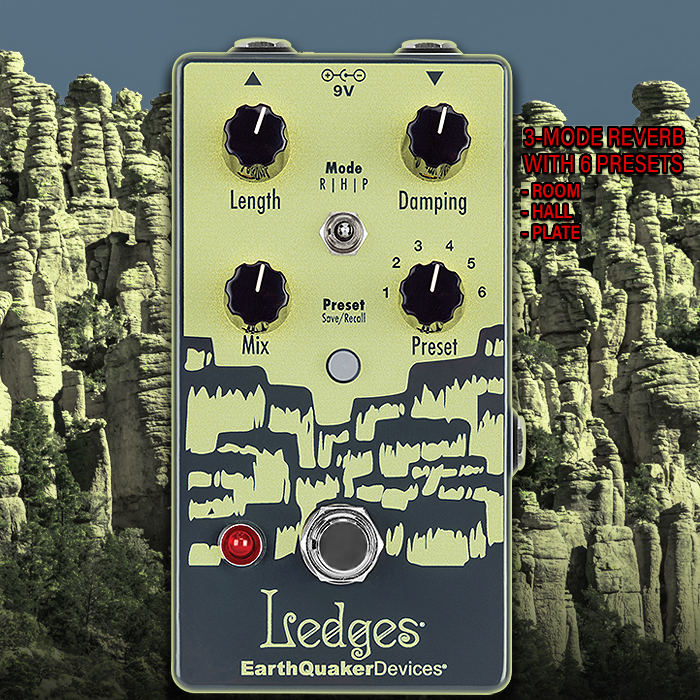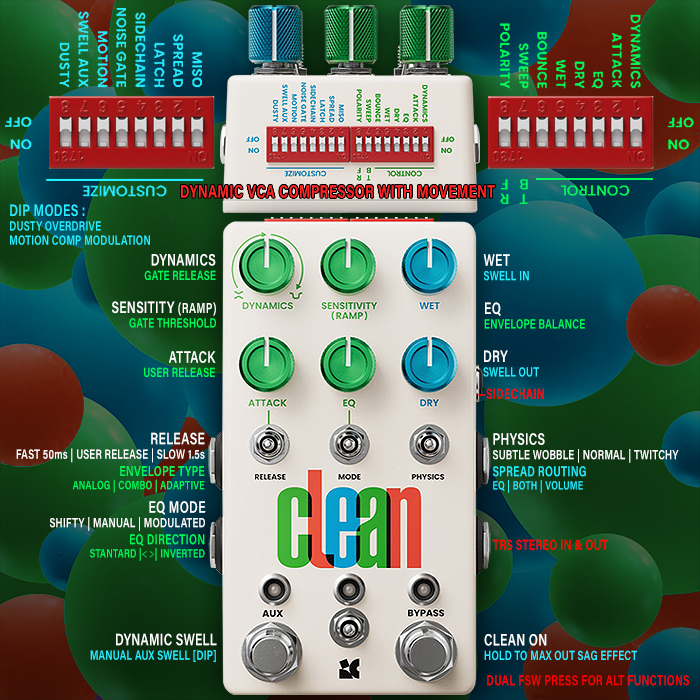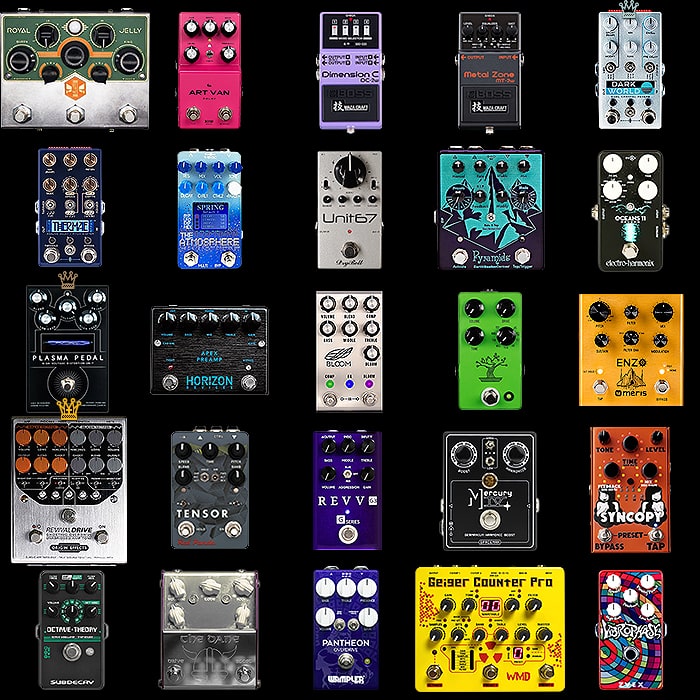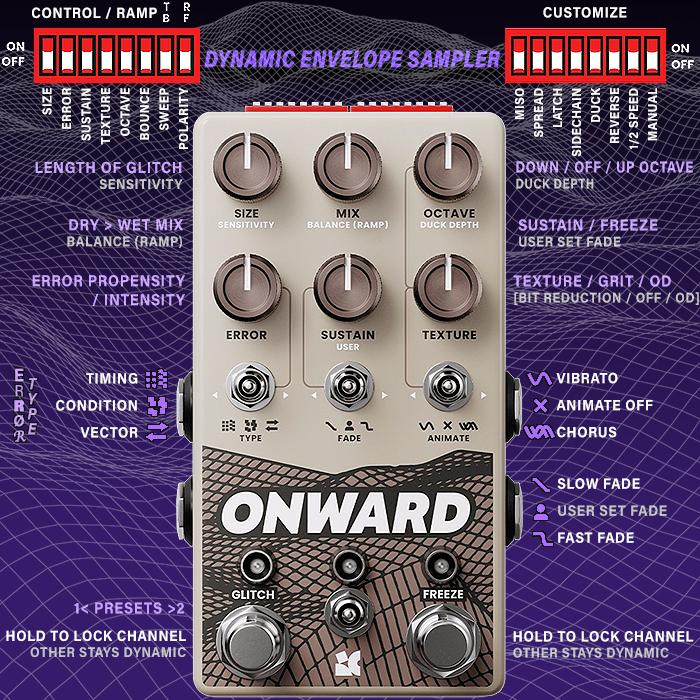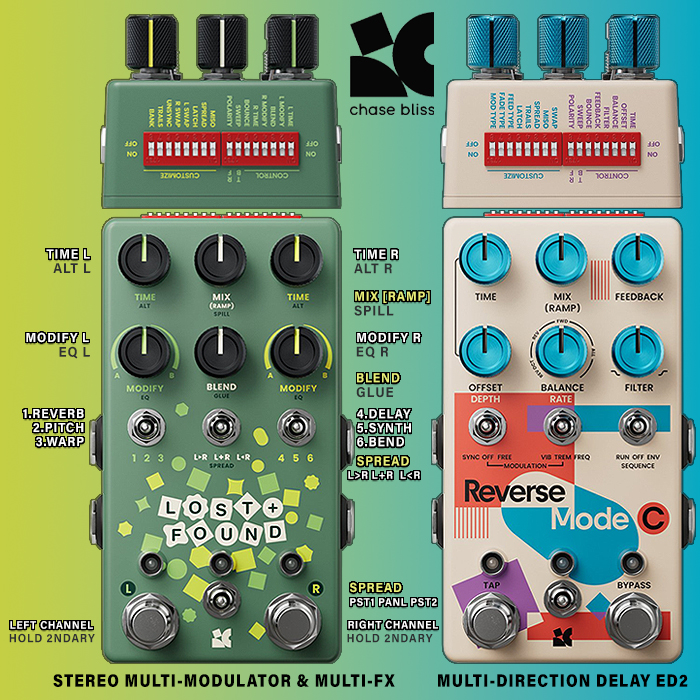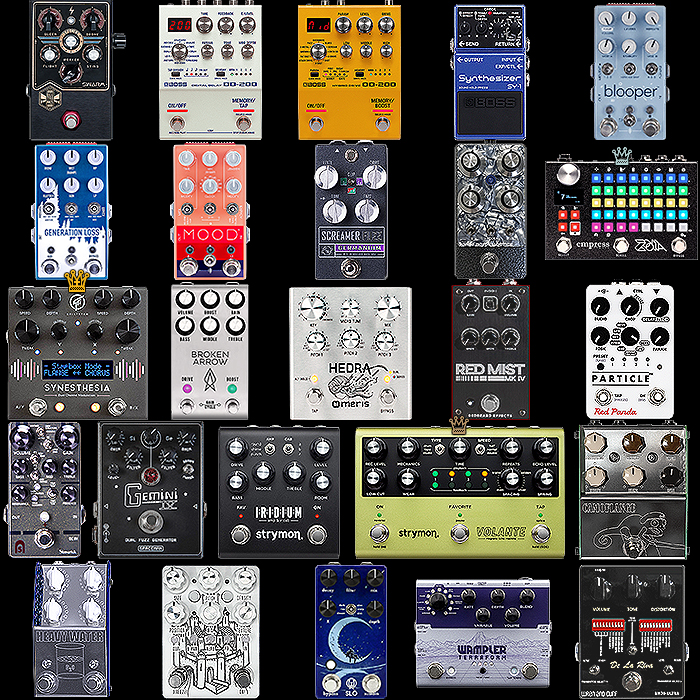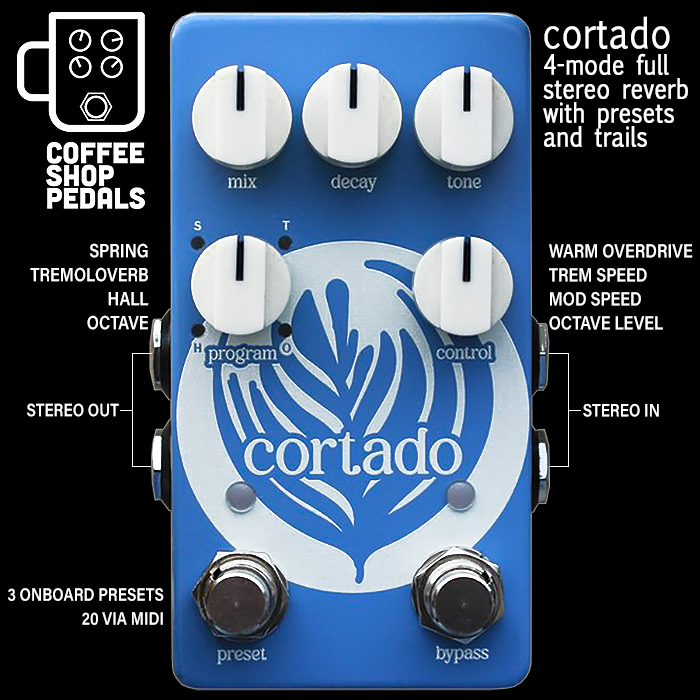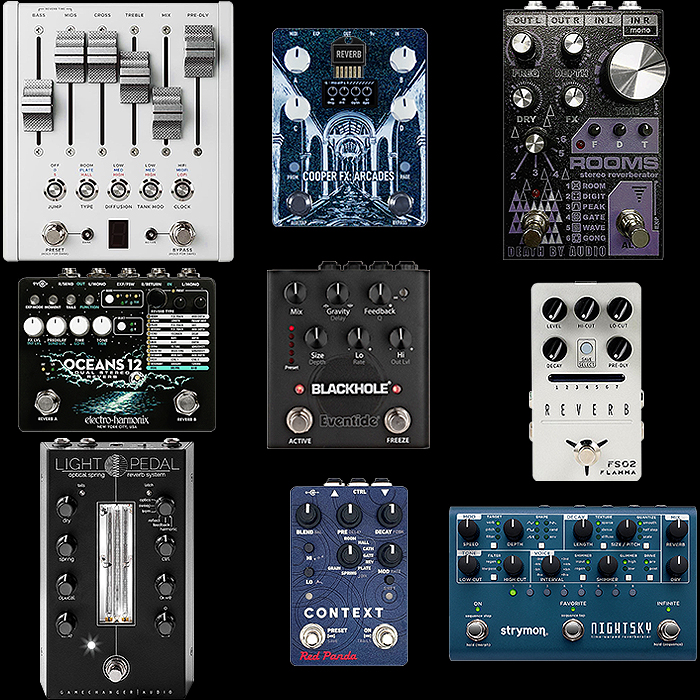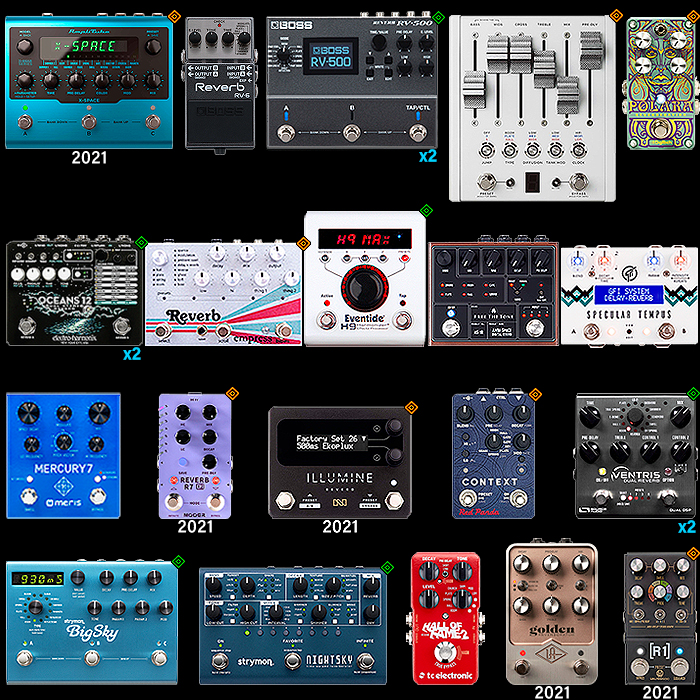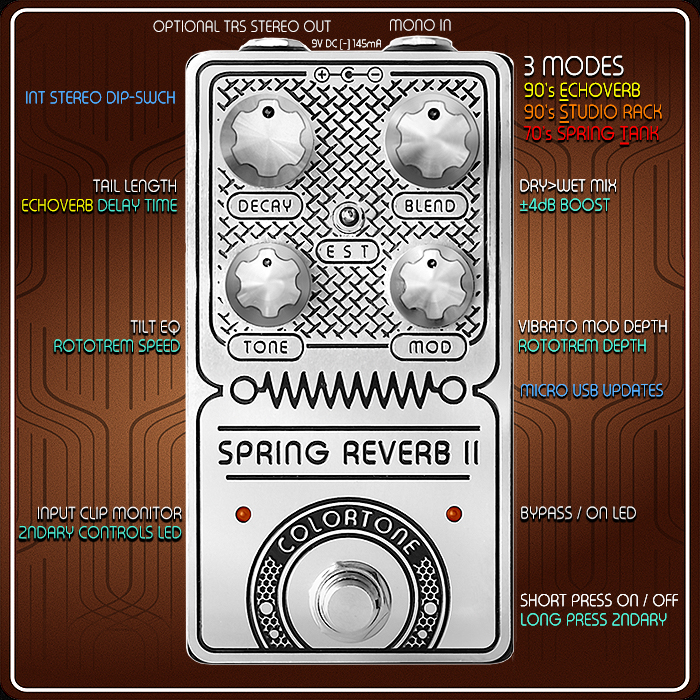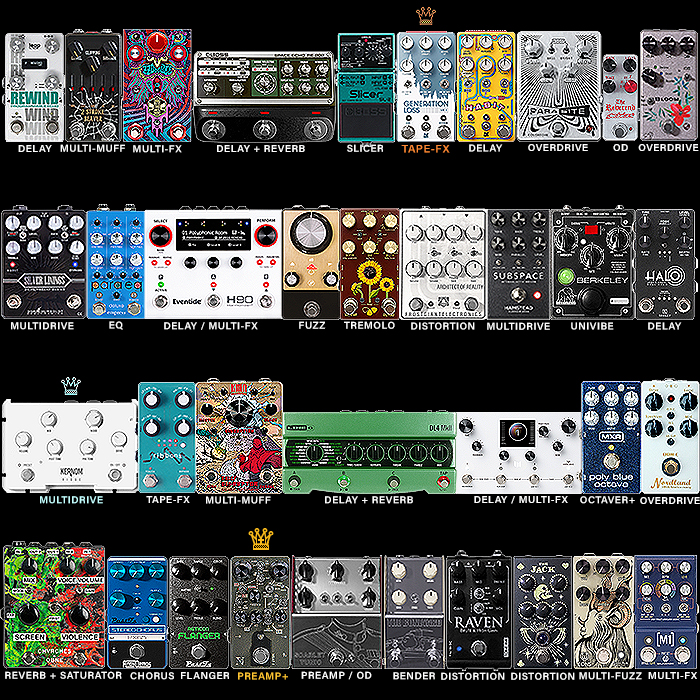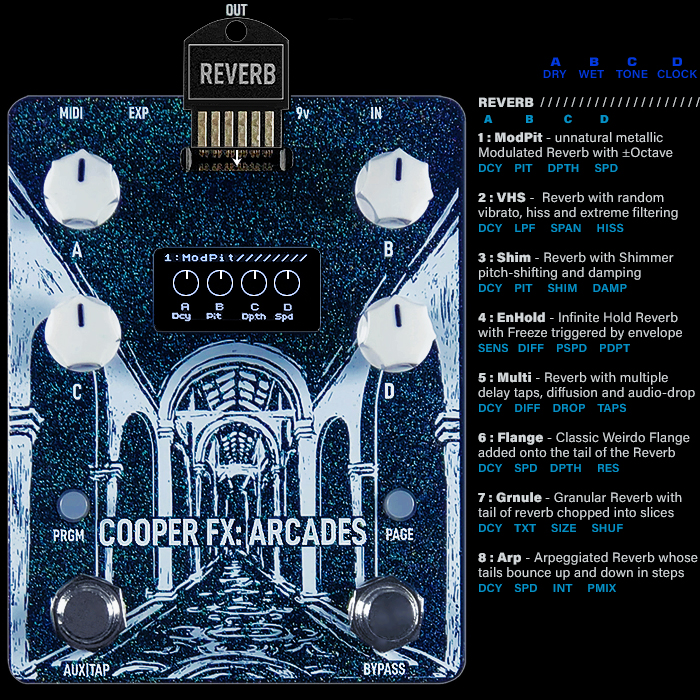Meris repeats its LVX Sound Designer project for its new Mercury X Modular Reverberator - harnessing algorithms from the Mercury 7 and Chase Bliss CXM 1978 along with 3 brand new ones
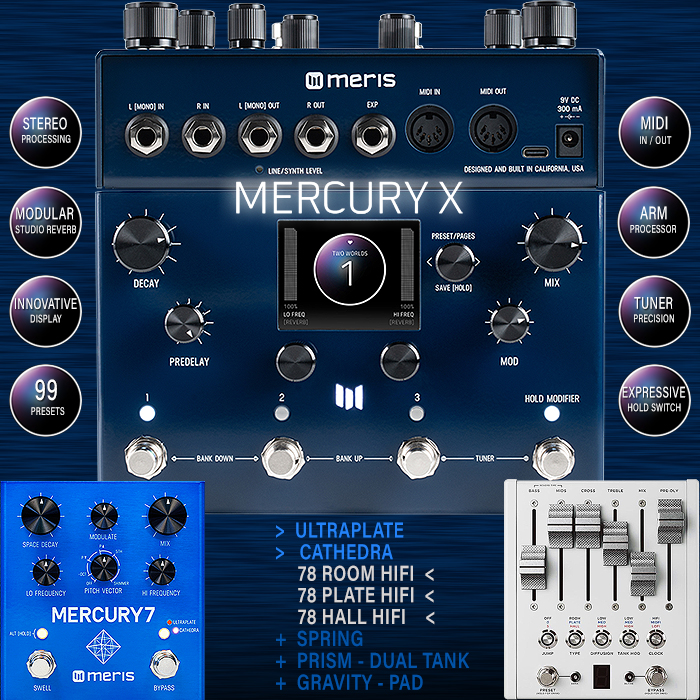
We all knew this was in the works - it was just a question as to when this inevitable follow-up to the Meris LVX Modular Delay would materialise - and that time is now evidently! This is another one of those supreme Sound Designer style pedals - and is somewhat reminiscent of Strymon’s NightSky ’Design-a-Reverb’ as I kind of referred to it at the time. Both have lots of hidden secondary features, parameters and functions - while the Meris Mercury X of course goes a few steps further in its granularity!
I own and am mostly a fan of the Meris LVX - which is particularly great if you’re just playing off the presets. While it’s relatively tiny screen and nature of operation / manipulation - means that it renders much more as a tabletop device vs a floor-based stompbox. I did not / do not find the screen / interface quite as intuitive as prescribed - it involves a lot of menu deep-diving and the tiny text on screen is rendered pretty much invisible from a standing position - if the pedal is on the floor.
In many ways this sits best alongside the Empress Zoia and Poly Beebo in its nature of operation - which lends it self a lot more towards the tabletop / synth crowd really. And this is quite a different approach to say the Empress Reverb - with its 32 instantly available Algorithms. For the Mercury X you have 8 core algorithms - 2 taken from the Mercury 7 - Ultraplate and Cathedra, 3 from its Chase Bliss CXM 1978 collaboration - enhanced versions of the 78 Room, 78 Plate and 78 Hall voicings - all derived from the Lexicon 224. And then we have 3 brand new algorithms - Spring (Tank), Prism (Dual Tank), and Gravity (sort of Reverb Pad).
The control topology is identical to the LVX as is its operation - of course with some different parameters - and just as the LVX is capable of creating some cool Reverb tones, so is the Mercury X capable of creating various Delay tones too.
I’m not totally sold on the menu-diving, and as mentioned the interface is not as intuitive as you are led to believe. The screen really needs to be a bigger sort of touch screen affair - where you can more easily navigate through all the pertinent adjoining options - while the structure of the navigation is actually a lot more linear and hierarchical rather than properly tangential in how you assemble your specific flavour of Reverb from all the elements available. Those obviously include the core 8 Reverb Algorithms / Structures, Modifiers, Modifier Parameters, PreDelay / Delay Parameters, Dynamics Categories / Elements, Preamp Categories, Filter Categories, Pitch Categories, and Modulation Categories - all listed below in summary fashion.
This is of course a highly complex and capable pedal - where you really need to consult the manual to get to grips with everything that is available to you - MIDI options etc. It’s a fairly pricy proposition at $599 - but considering you’re getting the Mercury 7 ($299) + the Chase Bliss CXM 1978 [minus the sliders!] ($899) and a whole lot more for sort of half that price - it actually turns out pretty good value in the end!
You can read more about the $599 Mercury X Modular Reverberator on the Meris Website - where it’s of course also available for orders, and should be at leading international dealers fairly imminently.
There’s of course plenty of amazing Reverb Workstations already out there and many being more accessible in affordability and operation - while it’s undeniable that this is a pretty special device - as can of course be witnessed in particular via Stefan Fast’s demo below. This is sitting somewhere between Essential and Nice-to-Have for me at the moment - I have a very busy October schedule - and commitments for a month or two. So this won’t be an instant acquisition - but I will look to get it into the reference collection - hopefully this year, but it could be early next! It’s a fantastic device for sure, but not without some challenges - and if you want to operate it successfully it really needs to be part of a tabletop setup!
Here follow all the further details / highlights in summary fashion :

Controls - Decay, PreDelay, Control 1, Control 2, Preset / Pages / Save [Hold] (Control 3), Mix, Modulation. Push Buttons & Corresponding Footswitches } 1, 2, 3, Hold Modifier, 1+2 = Bank Down, 2+3 = Bank Up, 3 + Hold = Tuner.
Rear Ports : L [Mono] In, R In, L [Mono] Out, R out, EXP, MIDI In, MIDI Out, USB-C, 9V DC [-] 2.1mm 300mA.
REVERB ALGORITHMS / STRUCTURES
ULTRAPLATE - Adapted from Mercury7, Ultraplate is an inspiring and lush plate with a fast build. Use the Ultraplate’s flexible decay range to create a wide range of studio textures.
Parameters : Decay, Lo Freq, Hi Freq, Mod Speed, Mod Depth, Pitch, Pitch Mix, Diffusion, Predelay Blend, Gate Attack, Gate Hold, Gate Decay.
CATHEDRA - Adapted from Mercury7, Cathedra is a massive and ethereal algorithm with a slow build. Cathedra is perfect for sci-fi textures and recreating C-beams glittering in the dark near the Tannhauser gate.
Parameters : Decay, Lo Freq, Hi Freq, Mod Speed, Mod Depth, Pitch, Pitch Mix, Diffusion, Predelay Blend, Gate Attack, Gate Hold, Gate Decay.
SPRING - A flexible algorithm that can be voiced to replicate both the amp based reverb sounds and the classic studio spring tanks featured on early recordings.
Parameters : Dwell, Lo Freq, Hi Freq, Predelay Blend, Gate Attack, Gate Hold, Gate Decay.
78 ROOM - A lively and direct sound. This algorithm is great for transforming static sounding virtual amps into the difficult to capture sound of a great amp live in the room with you. The Room algorithm features a unique infinite mode (Maxed out Decay controls) that interacts with the Tank Mod to provide deep chorused and flanged reflections.
Parameters : Mids, Bass, Treble, Cross, Tank Mod, Diffusion, Predelay Blend, Gate Attack, Gate Hold, Gate Decay.
78 PLATE - Fast and dense, the 78 Plate algorithm is a good match for beefing up percussion and vocals. Parameters : Mids, Bass, Treble, Cross, Tank Mod, Diffusion, Predelay Blend, Gate Attack, Gate Hold, Gate Decay.
78 HALL - A large hall with a medium build up of reflections. Great for building up ambient walls of sound. The Hall algorithm’s extended reflections are a great base for sculpting with the Bass/Mids/Cross controls. Deep rumbling bass caverns and ethereal upper mid emphasized halos of sound are easy to create. Explore the additional sparse mode for the Hall when Diffusion is set Low.
Parameters : Mids, Bass, Treble, Cross, Tank Mod, Diffusion, Predelay Blend, Gate Attack, Gate Hold, Gate Decay.
PRISM - The Prism Structure is a dual tank that allows you to build your own geometric rooms by specifying the size and distance and reflectivity. Prism features a highly configurable modulation section which allows different modulation phases per side to further increase the stereo image.
Parameters : Decay, Size, Dispersion, Distance, Lo Cut, Hi Cut, Mod Speed, Mod Depth, Mod Phase, Predelay Blend, Gate Attack, Gate Hold, Gate Decay.
GRAVITY - The Gravity Structure works by accelerating individual windows of your signal and stretching them across the horizon. Gravity is great for adding padlike textures beneath to your sound and features a powerful modulation section capable of both gentle and chaotic pitch effects inside of the reverb tank. Gravity’s Gain control is crucial to taming the explosive textures con- tained within.
Parameters : Decay, Tilt EQ, Mod Speed, Mod Depth, Mod Feedback, Gain, Mod, Predelay Blend, Gate Attack, Gate Hold, Gate Decay.
MODIFIERS
- LFO A
- LFO B
- Envelope
- Sample & Hold
- Sequencer
- Hold
MODIFIER PARAMETERS
- Speed / Cycle
- Attack / Decay
- Note Division
- Shape / Waveform
- Steps Up / Down
- Assign
Min & Max
PREDELAY / DELAY PARAMETERS
- Time
- Left Division
- Right Note Divison
- Half Speed
- Feedback
- Crossfeed
- Modulation
- Damping
- Dry Blend
DYNAMICS CATEGORIES / ELEMENTS
- Compressor
- Compressor Link (Left/Right)
- Swell
- Diffusion
- Limiter
- Limited Link (Left/Right)
- Freeze
PREAMP CATEGORIES
- Tube
- Transistor
- Op-Amp
FILTER CATEGORIES
- Ladder Filter
- State Variable Filter
- Parametric Filter
PITCH CATEGORIES
- Poly Chroma
- Micro Shift
- Lo-Fi
MODULATION CATEGORIES (MODULATE)
- 79 Chorus
- Vibrato
- Vowel Mod
- Tremolo
- Hazy
Key Features
- Modular Reverb System architecture
- 8 Custom Meris Reverbs: Ultraplate, Cathedra, 78 Room, 78 Plate, 78 Hall, Spring, Prism and Gravity
- Expanded 2.54 secs of Stereo Predelay with modular Feedback Routing Location
- Advanced ARM Processor
- Configurable Reverb Structures, Types, and Processing Elements for the ultimate customization in reverb processing
- Intuitive Color Screen based User Interface
- Expressive Hold Modifier Switch for on the fly control
- 99 Preset Locations in 33 Banks
- Favorite Preset Bank for instant access to your 3 favorite presets
- Instant Access Tuner with configurable Reference and Output mode
- Deep Modifier Section lets you route control signals to processing parameters
- New Independent Stereo Freeze alongside reverb
- Gate Envelope Controls for every reverb type
- All New Processing Elements including 79 Chorus, Vibrato, Vowel Mod, Tremolo, Hazy Lo-Fi and more
Selectable Note Divisions for each side of the stereo Predelay - Digitally controlled Analog mix bus
- Stereo input and output with separate jacks for each
- Switchable input/output headroom level for Instrument or Synthesizer / Line levels
- MIDI In and Out over standard MIDI Din Jacks
- Assignable Expression Pedal control for multiple parameters simultaneously
- Dedicated Expression Pedal Jack
- MIDI implementation for Continuous Control Parameters
- MIDI Preset Send and Receive
- MIDI beat clock synchronization
- Premium analog signal path and 24-bit AD/DA w/32 bit floating point DSP
- Premium Analog Devices JFET input section
- Dimmable screen and logo light
- Color – Deep blue glossy coat
- Designed and built in California, U.S.A.
- MAP - $599
Technical Specs
- Conversion : 24 bit A/D and D/A
- DSP : 32 bit floating point
- Sample Rate : 48000 Hz
- Input Impedance : 1 Meg Ohm
- SNR : 115 dB Typical
- Frequency Response : 20Hz-20kHz
- Max Input Level : 9 dBu (instrument level setting / +12.5 dBu (line/synth level setting)
- Power : 9V DC center-negative, 300mA, 2.1mm jack
- Bypass : Selectable True Bypass (Relay) or Analog Buffered Bypass
- Dimensions : 184mm x 114mm x 51mm / 7.25” wide, 4.5” long, 2” tall
- Weight : 600g / 24 ounces
Demos

